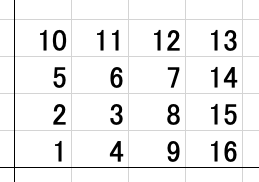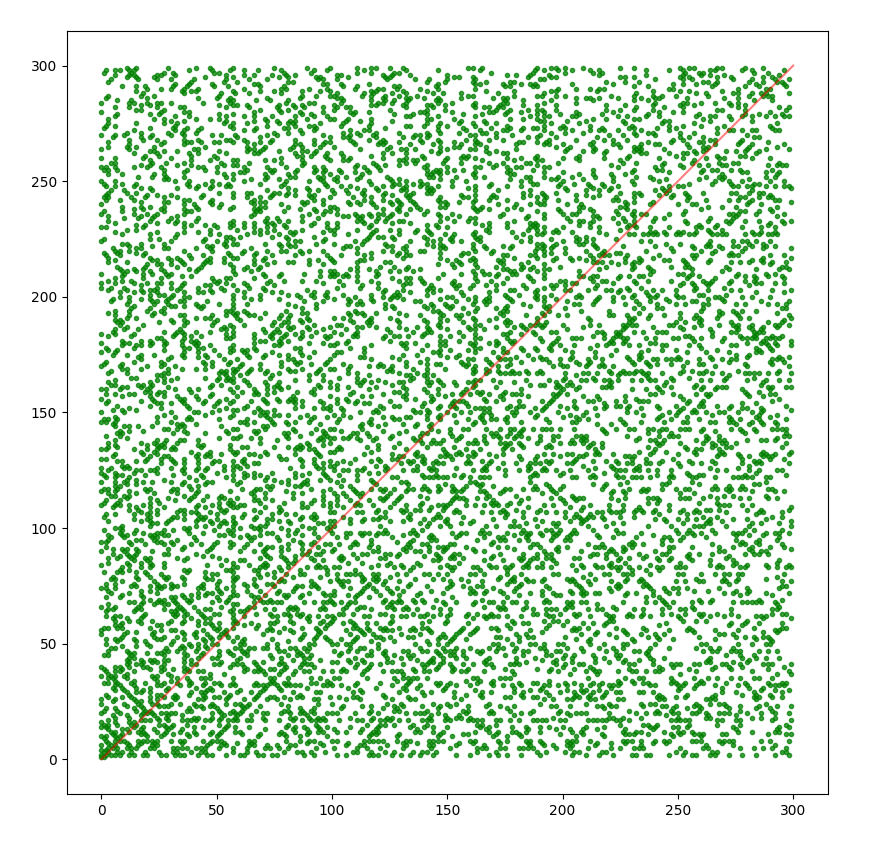Prime spiral
from matplotlib import pyplot as plt import numpy as np from sympy import isprime upper_limit = pow(2, 17) theta = [] r = [] ptheta = [] pr = [] def f(x): return (np.sqrt(x),x) for i in range(1, upper_limit): res = f(i) r.append(res[0]) theta.append(res[1]) if isprime(i): pr.append(res[0]) ptheta.append(res[1]) fig = plt.figure(figsize = (6,6)) ax = fig.add_subplot(111, projection="polar") # ax.plot(theta, r, ".", alpha = 0.1) # if you want to plot all the number ax.plot(ptheta, pr, "g.", alpha = 0.75) plt.show()

(*) np.sqrt(x) in f(x) helps to make the distribution uniform.
Consider the area of a ring of raduis
Therefore
Ulam spiral
The Ulam spiral constructed by writing the positive integers like this way on a square lattice

and then marking the prime numbers:

from matplotlib import pyplot as plt import numpy as np from sympy import isprime upper_limit = 300 xs = [] ys = [] pxs = [] pys = [] def f(x, y): return (x+1)*(x+1) - y if x>=y else y*y + 1 + i for i in range(upper_limit): for j in range(upper_limit): xs.append(i) ys.append(j) if isprime(f(i,j)): pxs.append(i) pys.append(j) # plt.plot(xs, ys, ".", alpha = 0.1) # if you want to plot all the number plt.plot(pxs, pys, "g.", alpha = 0.75) plt.plot([0, upper_limit], [0, upper_limit], "r-", alpha = 0.5) plt.show()
